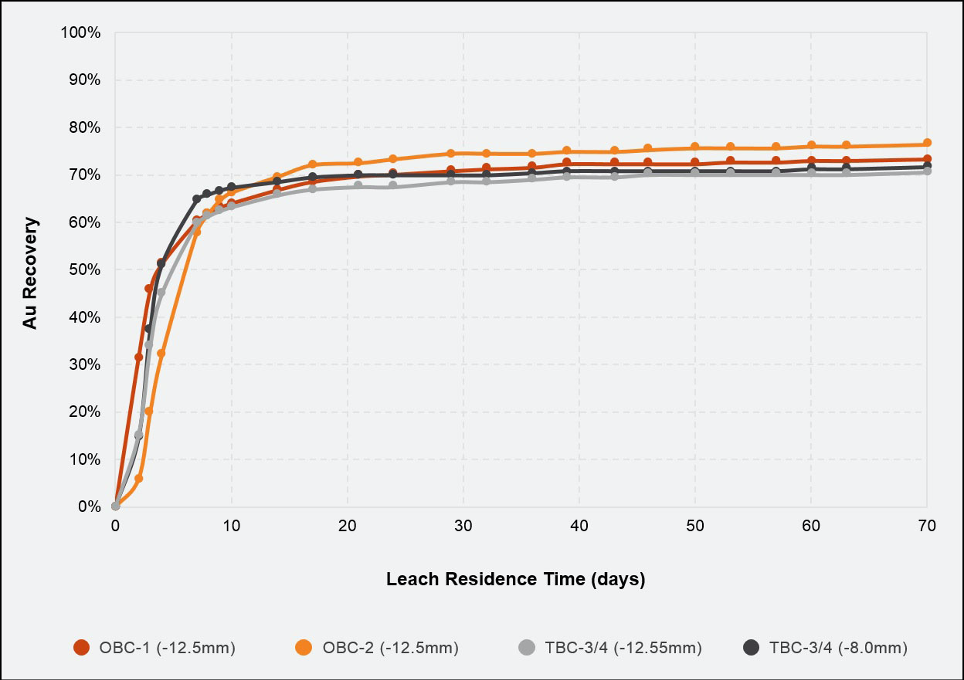Metallurgical Testwork
4 representative bulk samples, composited from HQ and PQ sized drill core, and each weighing 120kg, were shipped to WAI’s laboratory in the UK for metallurgical testing in October 2017. 2 samples were representative of both the oxide and transitional mineralisation types from the uppermost weathered gold oxide cap of the Hamama West deposit.
A comprehensive programme of metallurgical testwork was undertaken, including head assays, coarse and fine bottle roll leach tests, and percolation and agglomeration tests. Variable parameters of crush size and cyanide concentration were also tested. The results from the coarse bottle roll leach and percolation/agglomeration tests were used to set the parameters for the column leach tests, designed to simulate the final gold and silver leach recoveries obtainable using HLP technology. The column leach tests were terminated after 70 days.
The results of the column leach testing were very encouraging, and confirm the amenability of the Hamama West gold oxide cap mineralisation to HLP technology.
The column leach tests indicated fast initial leach kinetics for gold and silver, and a long leaching period tail. The 2 oxide zone samples returned an average overall gold recovery of 75.6% (silver 42.9%), and the transitional samples returned an average gold recovery of 72.7% (silver 36.3%) after 70 days of leaching.
65% of the gold was leached within the first 10 days of leaching. Lime consumption was very low, while cyanide consumption was considered to be moderately high. The column testing indicated that the optimum crush size for all material from the Hamama West gold oxide cap will be -12.5mm, representing a 2-stage crushing process, with no significant increase in recoveries obtained by crushing to -8mm. Agglomeration is required for the oxide mineralisation type, but not for the transitional material.

Hamama West bulk composite sample column leach test curves
